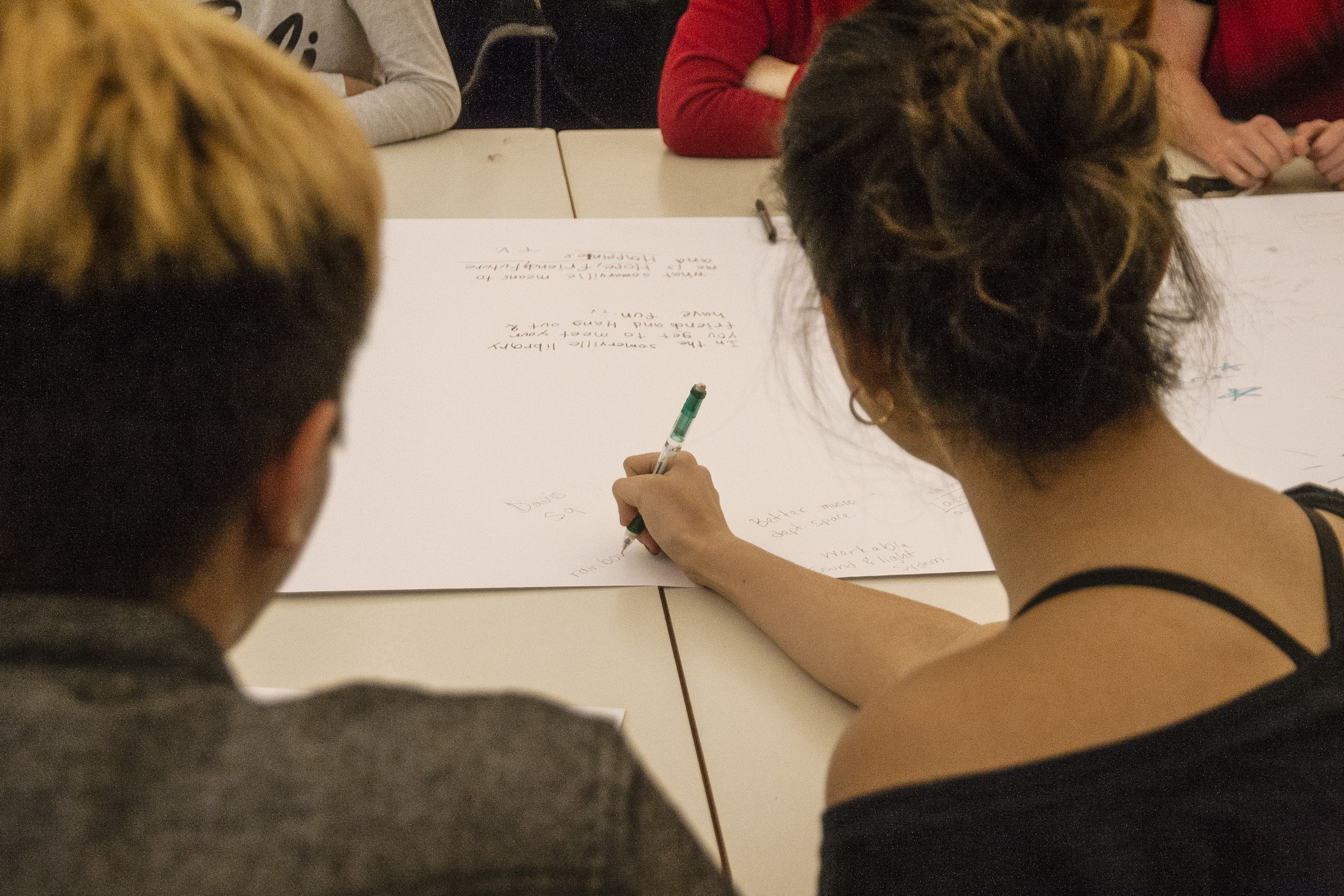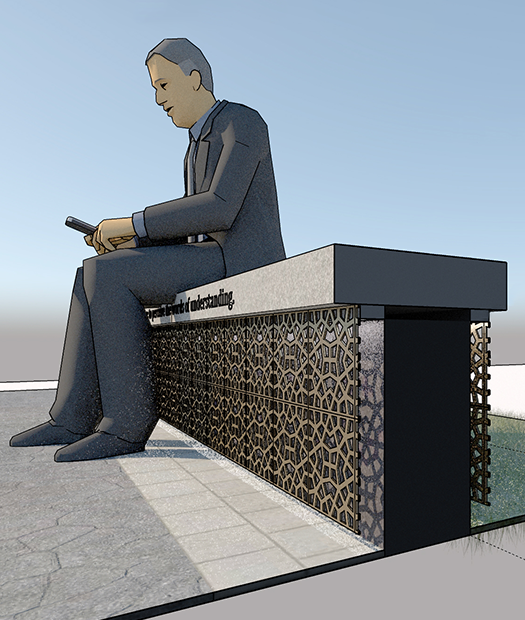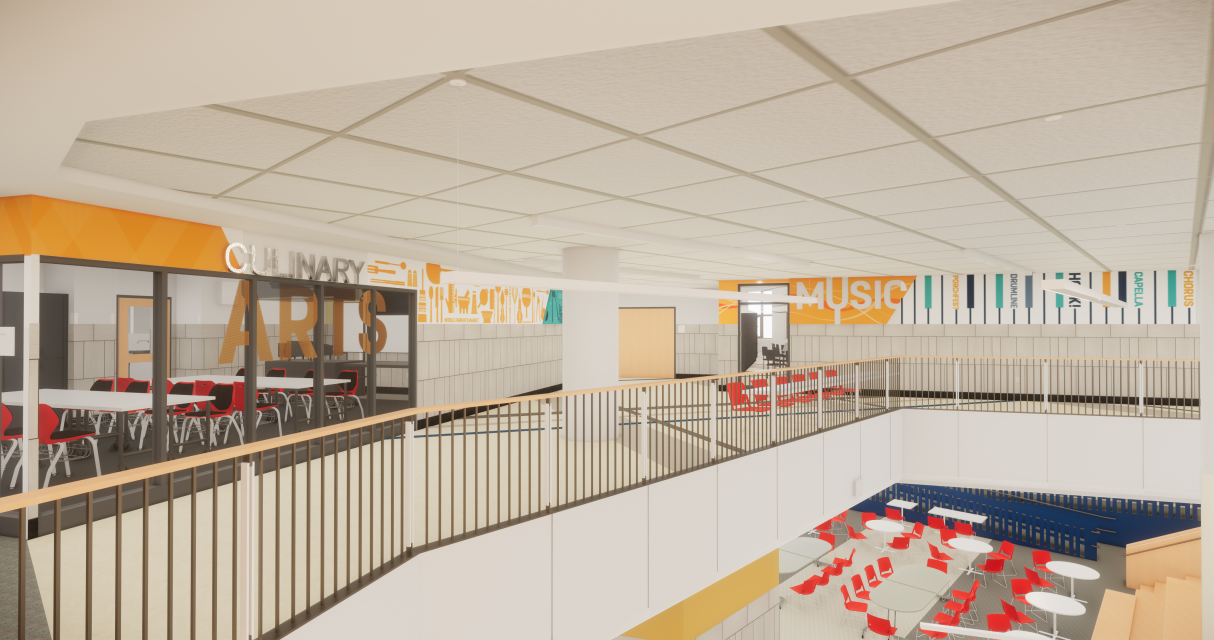Often, the biggest misconceptions seem to pertain to the scope of what graphic designers actually do and how they do it. For example, it’s common thought the graphic designers primarily make logos and business cards, or work to select colors. While we do those things, our work is more expansive. In one day, we might work on creating an interactive display or sensory experience for an elementary school, wayfinding mechanisms for a city campus, develop branding strategy for one of our Life Science clients, and work on infographics for SMMA’s website. Each project is unique and requires us to make use of different skills and techniques.
While the end-product varies from project to project, the design process always begins with research. Much like other aspects of design, when we start an environmental graphic design project, it’s pertinent that we gain a strong understanding of what our clients wish to accomplish so that we can develop a concept and solution that is integrated into the overall design concept and supports their mission. It’s important to understand that this work doesn’t happen in a vacuum, nor is it solely about understanding how to use software. Our work is inherently collaborative, while based in research, strategy, and the result of constant iteration and feedback loops.





